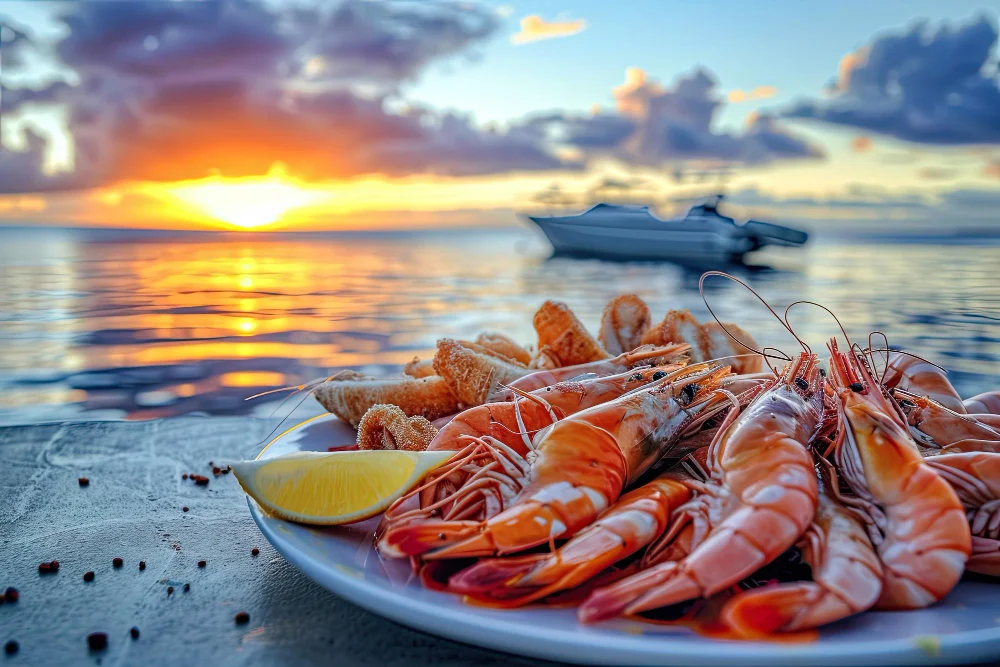Introduction to Seafood
Seafood has been a vital part of human diets and cultures for centuries. From the depths of the ocean to freshwater lakes and rivers, seafood encompasses a wide array of aquatic animals that are consumed by humans worldwide. This article aims to explore the diverse world of seafood, covering its types, nutritional benefits, sustainability concerns, cooking tips, cultural significance, and much more.
Types of Seafood
Seafood can be categorized into three main types: fish, shellfish, and crustaceans.
Fish
Fish is one of the most common types of seafood consumed globally. It includes a vast variety of species such as salmon, tuna, cod, and mackerel. Fish are a rich source of protein, omega-3 fatty acids, vitamins, and minerals.
Shellfish
Shellfish, which includes mollusks and bivalves like oysters, clams, and scallops, are known for their delicate flavors and textures. They are also packed with nutrients like zinc, iron, and vitamin B12.
Crustaceans
Crustaceans comprise creatures like shrimp, lobster, crab, and crayfish. These marine arthropods are prized for their sweet and succulent meat, offering a unique taste experience along with essential nutrients.
Nutritional Benefits of Seafood
Seafood is renowned for its numerous health benefits. It is a rich source of high-quality protein, essential amino acids, and omega-3 fatty acids, which are beneficial for heart health and brain function. Additionally, seafood is low in saturated fat and cholesterol, making it a heart-healthy food choice.
Sustainability in the Seafood Industry
As the demand for seafood continues to rise, sustainability has become a pressing issue in the seafood industry. Overfishing, habitat destruction, and bycatch are significant concerns that threaten marine ecosystems. Sustainable fishing practices, aquaculture, and certification programs aim to mitigate these environmental impacts and ensure the long-term viability of seafood resources.
Tips for Buying and Cooking Seafood
When buying seafood, it’s essential to choose fresh, high-quality products. Look for clear, bright eyes, firm flesh, and a mild ocean scent. When cooking seafood, simplicity is key. Whether grilling, baking, or pan-searing, delicate flavors should be complemented rather than overshadowed.
Popular Seafood Dishes Around the World
Seafood plays a central role in cuisines across the globe. From sushi in Japan to paella in Spain and shrimp gumbo in the southern United States, each region boasts its own unique seafood dishes that reflect local flavors and traditions.
Health Risks Associated with Seafood Consumption
While seafood offers numerous health benefits, there are also risks associated with its consumption. Contaminants such as mercury, PCBs, and microplastics can accumulate in certain fish species, posing health risks, particularly for pregnant women and young children. It’s essential to be mindful of consumption guidelines and choose seafood varieties that are lower in contaminants.
Seafood and Environmental Impact
The seafood industry has a significant environmental footprint, impacting marine habitats, biodiversity, and water quality. Overfishing, habitat destruction, and pollution are among the key factors contributing to these environmental challenges. Sustainable seafood practices and responsible consumption habits are crucial for minimizing these impacts and preserving marine ecosystems.
Cultural Significance of Seafood
Seafood holds immense cultural significance in many societies around the world. From traditional fishing practices to seafood festivals and rituals, it is deeply ingrained in the heritage and identity of coastal communities. The preparation and consumption of seafood often carry symbolic meanings and social significance, fostering connections between people and their environment.
Seafood Consumption Trends
Global consumption of seafood has been steadily increasing, driven by factors such as population growth, rising incomes, and changing dietary preferences. However, shifting consumer preferences towards sustainable, ethically sourced seafood are also influencing market trends, driving demand for certified products and transparency in the supply chain.
Seafood and Global Economy
The seafood industry is a significant contributor to the global economy, supporting millions of livelihoods worldwide. From commercial fishing operations to seafood processing and distribution, it encompasses a wide range of economic activities that generate income and employment opportunities, particularly in coastal regions.
Government Regulations on Seafood
Government regulations play a crucial role in managing and regulating the seafood industry to ensure sustainability, food safety, and consumer protection. Fishing quotas, licensing requirements, food safety standards, and traceability regulations are among the key measures implemented by authorities to safeguard seafood resources and public health.
Seafood Farming vs. Wild Catch
The debate between seafood farming (aquaculture) and wild catch (commercial fishing) is ongoing, with proponents and critics on both sides. While aquaculture offers opportunities for increased production and reduced pressure on wild fish stocks, it also raises concerns about environmental impacts, animal welfare, and food safety. Balancing the benefits and risks of both approaches is essential for achieving a sustainable seafood supply.
Innovations in the Seafood Industry
Advancements in technology and innovation are transforming the seafood industry, from sustainable fishing practices to seafood processing and packaging. Aquaponics, blockchain technology, and alternative protein sources are among the innovations driving positive change and shaping the future of seafood production and consumption.
Conclusion: Embracing Seafood Responsibly
In conclusion, seafood is not only a delicious and nutritious food choice but also a vital resource that sustains livelihoods, cultures, and ecosystems around the world. By embracing seafood responsibly, supporting sustainable practices, and making informed choices, we can enjoy its benefits while safeguarding the health of our oceans for future generations.

